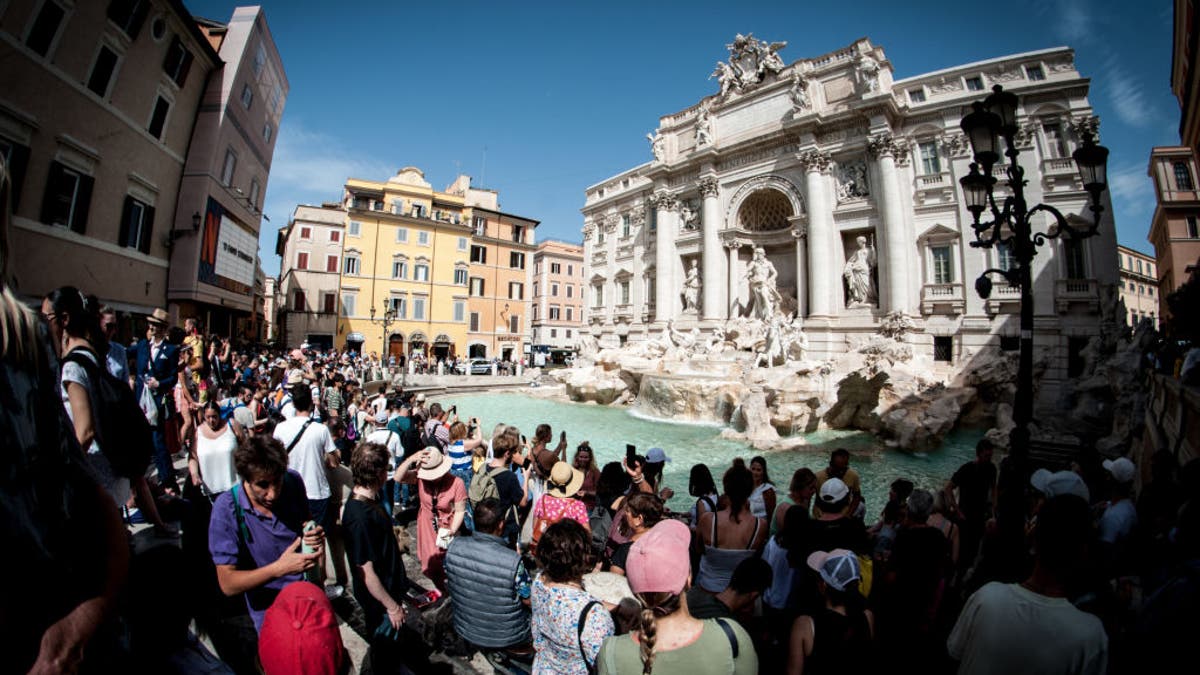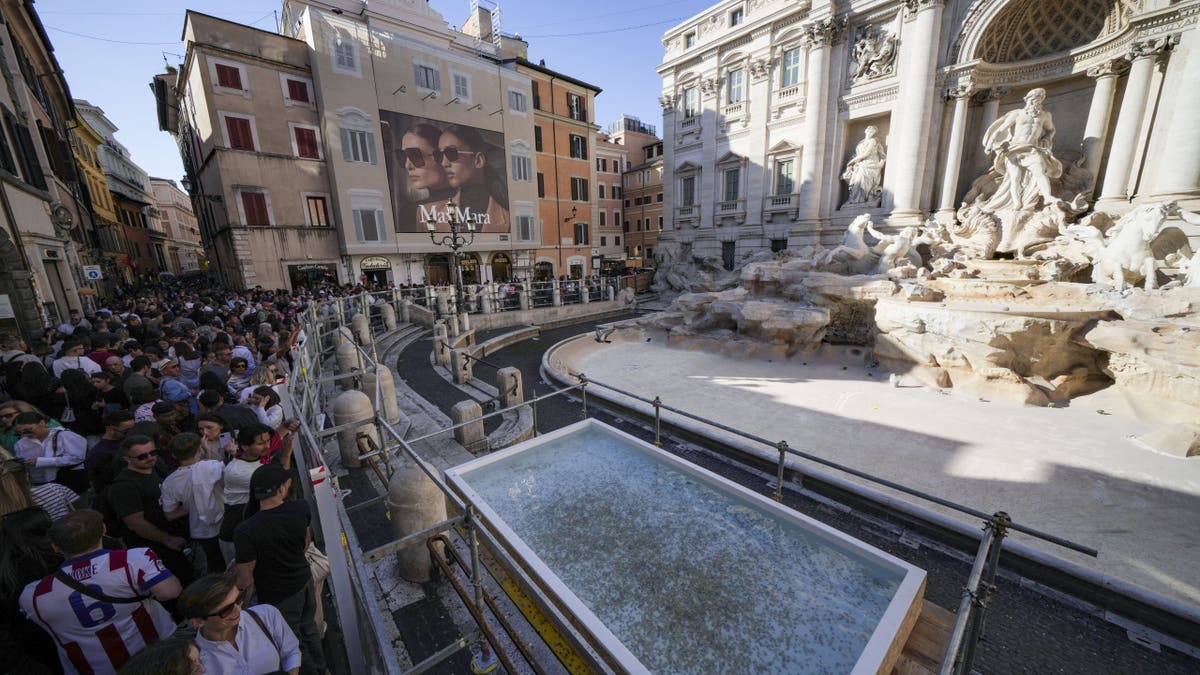The Trevi Fountain’s Temporary Transformation
Rome’s Trevi Fountain, a must-visit for those journeying through the Eternal City, has undergone an unexpected change that leaves many visitors astounded.
Currently, it is enveloped in maintenance work, replaced by a makeshift pool that captures attention for all the wrong reasons.
A temporary structure crafted seemingly from plastic and plywood stands where the iconic fountain usually flows, encircled by sturdy metal rods. Yet, against the backdrop of its grand legacy, this replacement still allows tourists to toss in coins, fulfilling the age-old tradition of making a wish.
Visitor Reactions: A Mixed Bag of Emotions
As observers share their thoughts online, reactions to this faux formation range from humor to dismay. One irate traveler described the pool as “kinda tacky,” while another reflected on their experience with a somber, “It’s the saddest thing I’ve seen in Italy in as long as I can remember.”
Accompanying the sentiments, images flood the internet, stirring conversation among visitors who hoped for a majestic glimpse of the restored masterpiece. “That just looks … wrong,” lamented a social media user, while one gentleman humorously quipped, “That gives you like the opposite of your wish.”

The temporary pool evokes mixed feelings. One onlooker felt compelled to comment, “This is very cheap and ugly; it does not belong at The Fountain of Trevi.” Others noted the contrast between this substitute and the elegance expected from such an iconic landmark, remarking on the lack of sophistication with a chuckle, “If the question was how to make something beautiful ugly — this is the answer.”
For many, like one appreciative woman, the current experience is a bittersweet reminder: “Imagine spending all that money — and finally having maybe your one chance to see Rome. It is what it is, but so glad I have seen it in all its glory.”

Support for a Pragmatic Solution
Yet not all opinions are rife with sarcasm; some social media users defended the decision by Italian officials. “Great idea while construction is ongoing,” noted one supporter, underscoring the practicality behind the decision. “It’s not affecting the crowds. It was packed last night,” chimed another, perhaps lightening the mood surrounding this temporary inconvenience.
The rationale for this interim arrangement coincides with Italy’s preparations for the Holy Year, known as the Jubilee, a time that promises an influx of travelers. As the Roman landscape faces overtourism, Italian authorities have begun contemplating additional measures—like allocating time slots to visit the Trevi Fountain, in an effort to mitigate overcrowding.

During a recent news conference, Rome’s Mayor Roberto Gualtieri articulated the complexities of maintaining such a landmark amidst swell crowds. “The situation at the Trevi Fountain is becoming technically very difficult to manage,” he stated, highlighting the serious nature of the city’s crowd control efforts going forward.
Despite the makeshift aesthetics, visitors still have the chance to participate in the time-honored tradition of tossing coins into the water. After all, even a temporary solution can spark hope and wishes, reflecting the resilience of Rome’s spirit. One random fact lingers: the Trevi Fountain, completed in 1762, is adorned with sculptures that represent the Aqueducts of Aqua Virgo, and even in its barest form, the fountain’s legacy endures.
